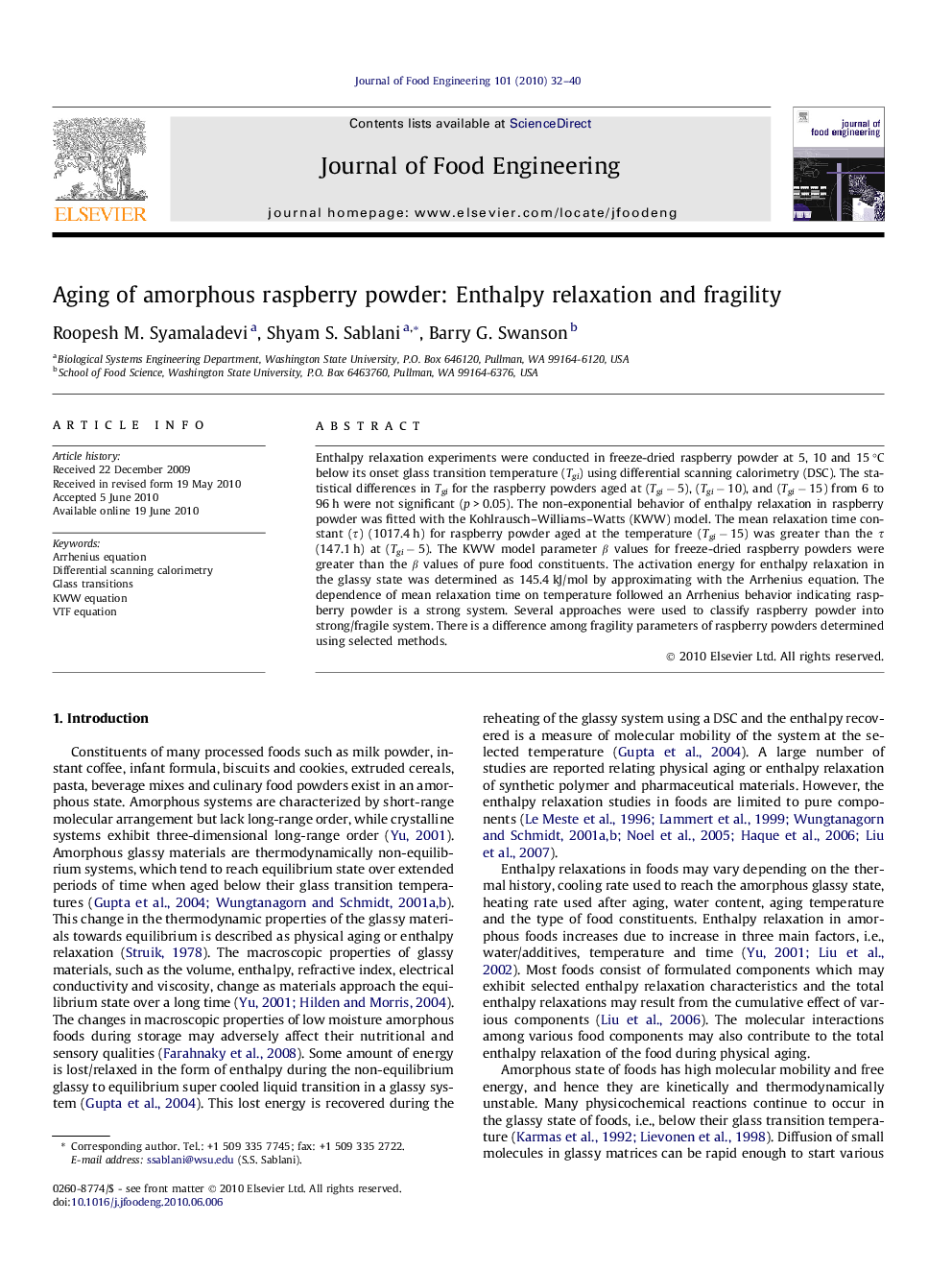| Article ID | Journal | Published Year | Pages | File Type |
|---|---|---|---|---|
| 224202 | Journal of Food Engineering | 2010 | 9 Pages |
Enthalpy relaxation experiments were conducted in freeze-dried raspberry powder at 5, 10 and 15 °C below its onset glass transition temperature (Tgi) using differential scanning calorimetry (DSC). The statistical differences in Tgi for the raspberry powders aged at (Tgi − 5), (Tgi − 10), and (Tgi − 15) from 6 to 96 h were not significant (p > 0.05). The non-exponential behavior of enthalpy relaxation in raspberry powder was fitted with the Kohlrausch–Williams–Watts (KWW) model. The mean relaxation time constant (τ) (1017.4 h) for raspberry powder aged at the temperature (Tgi − 15) was greater than the τ (147.1 h) at (Tgi − 5). The KWW model parameter β values for freeze-dried raspberry powders were greater than the β values of pure food constituents. The activation energy for enthalpy relaxation in the glassy state was determined as 145.4 kJ/mol by approximating with the Arrhenius equation. The dependence of mean relaxation time on temperature followed an Arrhenius behavior indicating raspberry powder is a strong system. Several approaches were used to classify raspberry powder into strong/fragile system. There is a difference among fragility parameters of raspberry powders determined using selected methods.
